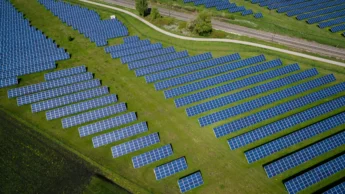In an era when the world is paying increasing attention to renewable energy sources, green gas is a promising alternative that has the potential to reduce our dependence on fossil fuels.
Green gas, also known as biomethane, is produced from organic material such as green waste, sewage sludge, or even manure. It offers a renewable energy source that is less harmful to the environment compared to traditional natural gas. But how is green gas production encouraged? Let’s take a look at some of the main incentives.
Do you want your innovation to make it easier to meet ESG targets? Would you like to develop your idea in collaboration with Beeliners? We would love to help you! Feel free to drop by for a cup of coffee and we will be happy to discuss the possibilities with you.
Grants and financial incentives
Subsidy schemes and financial incentives play a crucial role in encouraging green gas production. Governments around the world have implemented various subsidies and financial incentives to encourage the development of green gas projects. These subsidies can take different forms, such as investment support, tax breaks, and guaranteed off-take prices for produced green gas.
Investment subsidies are often provided to cover initial capital investments for green gas installations. These subsidies reduce the financial risk for investors and make green gas projects more attractive. In addition, governments can offer tax benefits to companies investing in green gas infrastructure, such as reduced corporate taxes or depreciation on investments. These tax breaks reduce operational costs and increase the profitability of green gas projects.
Another important tool is guaranteed purchase prices for green gas. This means that energy companies are obliged to buy green gas at a certain price, giving producers a guaranteed revenue stream. This reduces market risk for producers and ensures a stable return on investment. These incentives make green gas projects more financially attractive and contribute to the growth of the green gas sector.

Laws and regulations
A stable and favourable legal framework is essential for green gas production. Laws and regulations set the framework conditions within which green gas projects can operate and have a major impact on the development and growth of the sector. One of the most important aspects of laws and regulations is setting sustainability standards for green gas.
Sustainability standards ensure that green gas is produced and used in an environmentally friendly way. These standards can cover different aspects of green gas production, such as the source of biomass, CO2 emissions from the production process, and the impact on biodiversity. By setting sustainability standards, governments can ensure that green gas is a truly sustainable alternative to fossil fuels.
Besides sustainability standards, permitting procedures play an important role in facilitating green gas projects. Efficient permitting procedures are essential to accelerate the development of green gas facilities and reduce obstacles to growth. A smooth permitting process can significantly reduce the time and costs required to develop green gas projects, making it easier for investors to invest in the sector.
Moreover, a stable legal framework provides certainty to investors and stimulates the growth of the green gas sector. Clear rules and regulations ensure that producers know where they stand and create a favourable environment for investment. A stable legal framework is therefore crucial to maintain investor confidence and stimulate the growth of the green gas sector.
Cooperation and partnerships
Collaboration and partnerships are vital to the success of green gas projects. Green gas production often involves several steps, from biomass collection to green gas production and distribution. Successful green gas projects therefore require cooperation between different stakeholders, including farmers, waste processors, energy companies, and local authorities.
By working together, parties can create synergies, share costs and pool expertise to make green gas production more efficient and profitable. For example, farmers can provide organic residues for green gas production, while waste processors can help collect and process biomass. Energy companies and local governments, in turn, can ensure the distribution and purchase of green gas.
Partnerships can also help identify and solve operational challenges. By sharing knowledge and experience, parties can work more efficiently and reduce production costs. Moreover, partnerships can accelerate the development of green gas projects by pooling resources and expertise.
Research and development
Investing in research and development is essential to improve and refine green gas production technologies and processes. Stimulating innovation can increase the efficiency and cost-effectiveness of green gas production, making it more attractive as a renewable energy source.
A key research area is the development of advanced green gas production methods. This includes exploring new technologies such as gasification, anaerobic fermentation and thermal hydrolysis for the production of green gas from different types of organic matter. By investing in research on these technologies, green gas producers can improve and optimise their production processes.
Research into green gas storage and distribution is also important. Green gas can be stored and distributed via existing gas networks, but new methods and technologies are also under development to store and transport green gas in locations where gas networks are not available. By investing in research into these areas, green gas producers can open up new markets and increase their sales opportunities.
Awareness and education
Raising awareness about the benefits of green gas and the importance of renewable energy is crucial for boosting green gas production. Information campaigns and educational initiatives can inform the public about green gas, highlight its benefits and dispel misconceptions.
An important aspect of education is informing consumers about the benefits of green gas. Green gas is an environmentally friendly and sustainable energy source that can help reduce greenhouse gas emissions and reduce dependence on fossil fuels. By making consumers aware of these benefits, green gas producers can generate greater demand for their product and increase their sales opportunities.
Education about renewable energy sources and environmental issues is also important. By making people aware of the urgency of climate change and the need to switch to clean energy sources such as green gas, green gas producers can promote a culture of sustainability and encourage people to take action to protect the environment.
Working on your ESG-innovation together with Beeliners
Do you have a good idea for a product, service, process or technological innovation that makes it easier to achieve ESG goals? And would you like to develop your idea in collaboration with Beeliners? Beeliners has an innovation cell dedicated to innovations in energy and heating systems. Feel free to drop by for a cup of coffee and we will be happy to discuss the possibilities with you.
Also interesting
-

What is bio-energy?
In an era when the urgency of renewable energy sources is becoming increasingly prominent, bioenergy takes centre stage as a promising and environmentally friendly solution. This renewable form of energy, derived from biological sources such as plants, offers a range of possibilities for reducing our dependence on fossil fuels and… Read More
-

This will encourage the use of renewable energy
In a world where the calls for sustainability and environmental awareness are getting louder, the use of renewable energy sources is central to the fight against climate change. While individual efforts by citizens and businesses play an important role, a crucial responsibility rests on governments worldwide to accelerate the transition… Read More
-

Using more renewable energy, 7 innovations
The energy transition is in full swing. We are switching to renewable energy sources, such as solar and wind, to keep our planet livable. But how do we make this switch smoothly and efficiently? The key lies in innovation. In this blog, we discuss various innovations that make renewable energy… Read More

